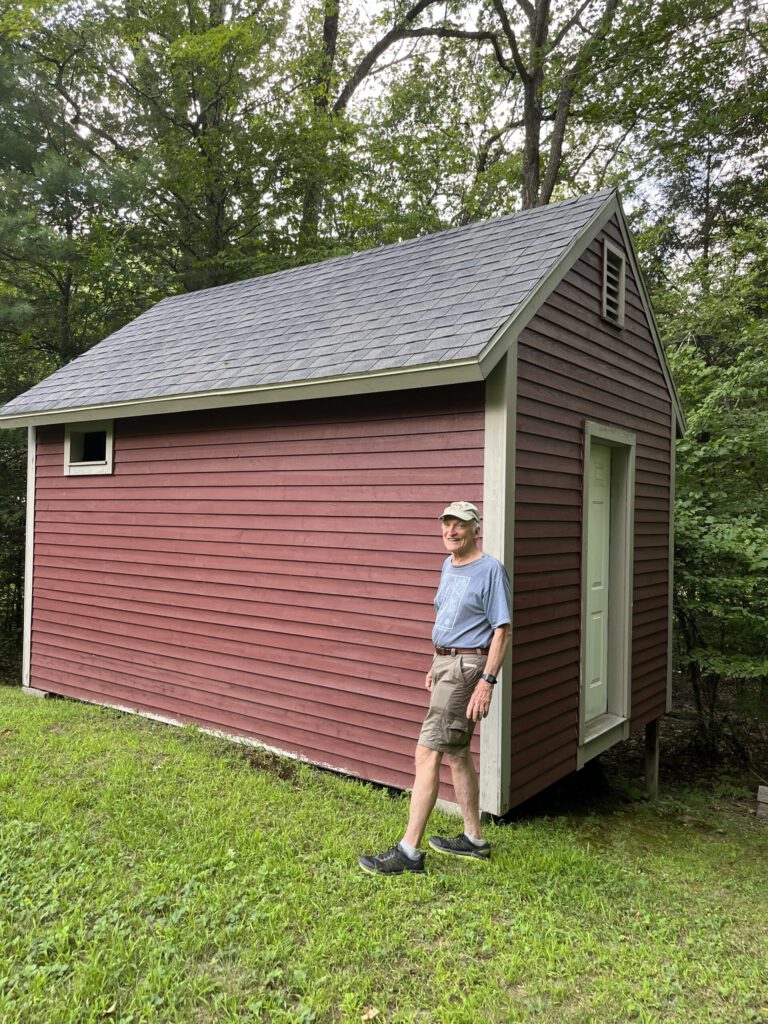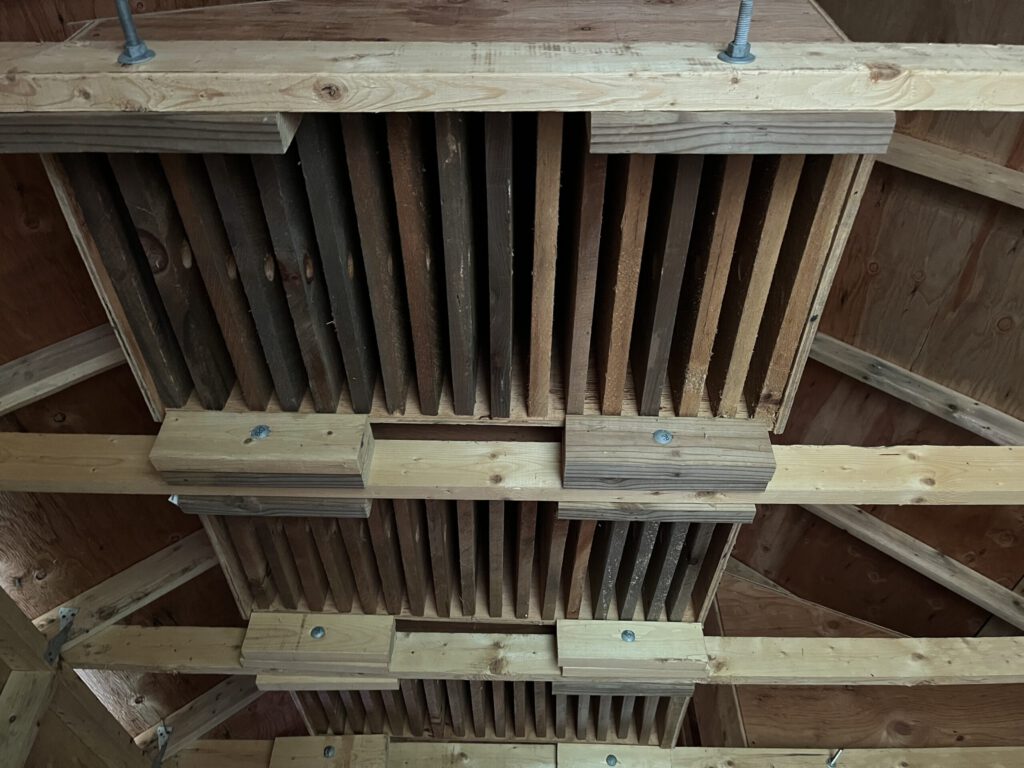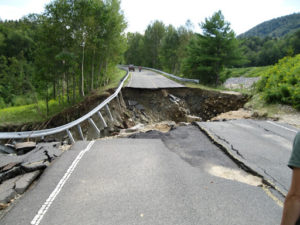Did you know there is a large bat house in Cornish? It’s located right behind the Cornish Town Offices and was built in the 1990’s, specifically as an alternative home space for the maternal colony of Little Brown Bats which were living in the attic space of the old building destined to become the new town offices. Not every building, attic, out building, or barn can boast of a maternal colony, and hundreds of female bats and their pups were thriving in this previously unused (and perfect) location!

Don Snowden standing next to the bat house behind the Town Offices.
Town officials, including the Conservation Commission knew that it was unlikely for people and such a large colony of bats to share living space for long. According to interviews with Don Snowden and Brian Meyette (both members of the Cornish Conservation Commission at the time), a large volume of bat guano was removed from the attic by Brian and Peg Meyette and Mariet Jaarsma, and efforts were made to minimize unwanted people and bat interactions. Eventually, and with professional guidance, entrances and exits were strategically reduced and the new bat house was built in the hope that the colony would move en masse to the new space created for them in the backyard. Sadly, human efforts did not convince the bats, and the maternal colony dispersed.
Today there are a few bats using panels in the Bat House, but it is certainly not a maternal colony. All NE bats have had a difficult intervening 30 years with habitat losses and especially White-Nose Syndrome (WNS) found in NH in 2009 resulting in a 99% population decline for some species. Bats can live ~ 20 years, and females only have one pup a year (born in June) and pups are unable to fly for a month and need the safety and warmth of the colony. As with many young animal and bird species, many do not make it to adulthood. Bats require suitable foraging habitat, roost sites, and hibernacula (for winter hibernation), all of which can be impacted by development, loss of forested habitat and human activity, and even insect declines. All 8 of the bat species that occur in NH are listed as Endangered, Threatened or as a Species of Special Concern.
Inside the bat house.

Bats are huge consumers of insects, including agricultural and forest pests, and mosquitoes. Truly a help to humans. They can eat 50% of their own body weight every night (think 3,000 bugs a night), and more if they are females with pups! Generally they are nocturnal, sleeping in the day, and flying at dusk to forage, and again in the hours before dawn, they drink only on the wing, swooping across puddles and streams and ponds. Little and Big Brown Bats and 3 other species of NH bats hibernate in caves and mines in the winter. Three of our northeastern species migrate south.
You can help bats by letting them use your barn (a favored environment for centuries), installing a bat house, by using a licensed wildlife control operator to rid them from your attic, avoiding disturbance to maternity roost trees or other roost locations mid-May through mid-August, and conducting timber harvests when bats are hibernating (October 31-April 1). Stay out of caves or mines in winter, they are very sensitive to disturbance, and will easily come out of hibernation (potentially lethal for them).
Bats like other mammals can be infected with rabies, but the large majority are not infected. If a bat is easily approached it is likely sick, and humans should avoid contact, do not handle a bat with bare hands and avoid being bitten. Seek medical help if you are bitten.
A recent article in the Valley News (Oct. 24, 2022) featured our Eastern Red Bat, which is currently migrating south for the winter. An excellent description of their feeding techniques offered the following, “like all northeastern bats, they use echolocation, emitting extremely high-pitched “barks” normally inaudible to humans. The sound of a bat’s bark reflects off nearby obstacles and flying insects, allowing the bat to “see” through its ears”. The barks become faster as the bat gets closer to its prey, to the point of a brilliant vibrato- a feeding buzz, and when successful, the insect is snatched out of the air, or the bat reaches out a wing to flick the morsel into its mouth! One less mosquito bite for us!!!
Let’s celebrate and enjoy our native bat species, and consider what YOU can do to help your bat neighbors thrive once again!
For more info on NH bats, visit:
www.wildlife.state.nh.us/nongame/bats-nh.html
Volunteer to help collect data on NH bats at:
www.nhaudubon.org/new-hampshire-bat-survey
And learn more about bat conservation on a global scale, visit:
www.batcon.org

